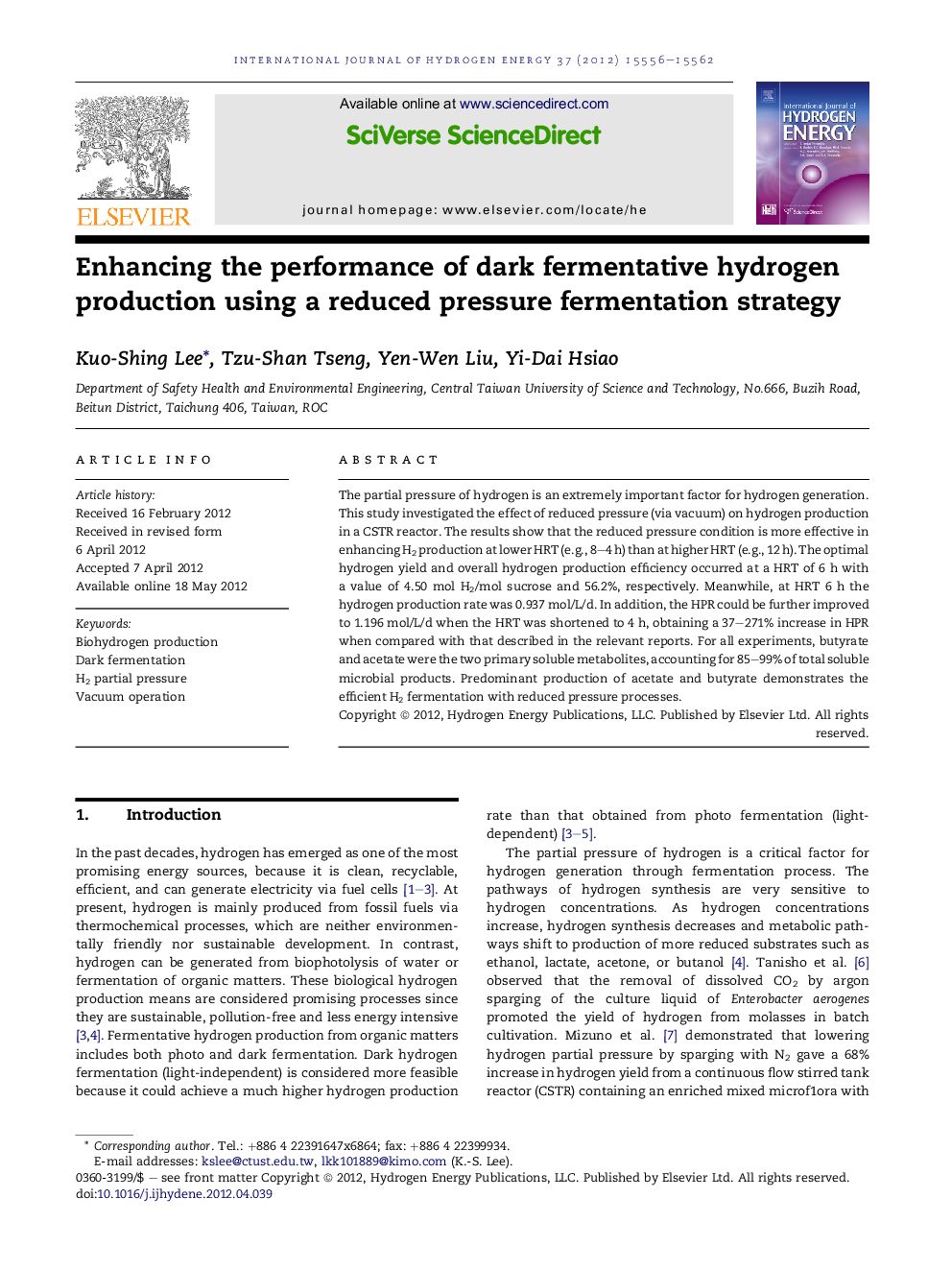| Article ID | Journal | Published Year | Pages | File Type |
|---|---|---|---|---|
| 1274566 | International Journal of Hydrogen Energy | 2012 | 7 Pages |
The partial pressure of hydrogen is an extremely important factor for hydrogen generation. This study investigated the effect of reduced pressure (via vacuum) on hydrogen production in a CSTR reactor. The results show that the reduced pressure condition is more effective in enhancing H2 production at lower HRT (e.g., 8–4 h) than at higher HRT (e.g., 12 h). The optimal hydrogen yield and overall hydrogen production efficiency occurred at a HRT of 6 h with a value of 4.50 mol H2/mol sucrose and 56.2%, respectively. Meanwhile, at HRT 6 h the hydrogen production rate was 0.937 mol/L/d. In addition, the HPR could be further improved to 1.196 mol/L/d when the HRT was shortened to 4 h, obtaining a 37–271% increase in HPR when compared with that described in the relevant reports. For all experiments, butyrate and acetate were the two primary soluble metabolites, accounting for 85–99% of total soluble microbial products. Predominant production of acetate and butyrate demonstrates the efficient H2 fermentation with reduced pressure processes.
► Strategies on enhancing a bioH2-production were developed. ► Using a reduced pressure process promoted H2 production rate (HPR) by 3.7 fold. ► Obtaining a high overall H2 production efficiency of 56.2% at HRT 6 h.
